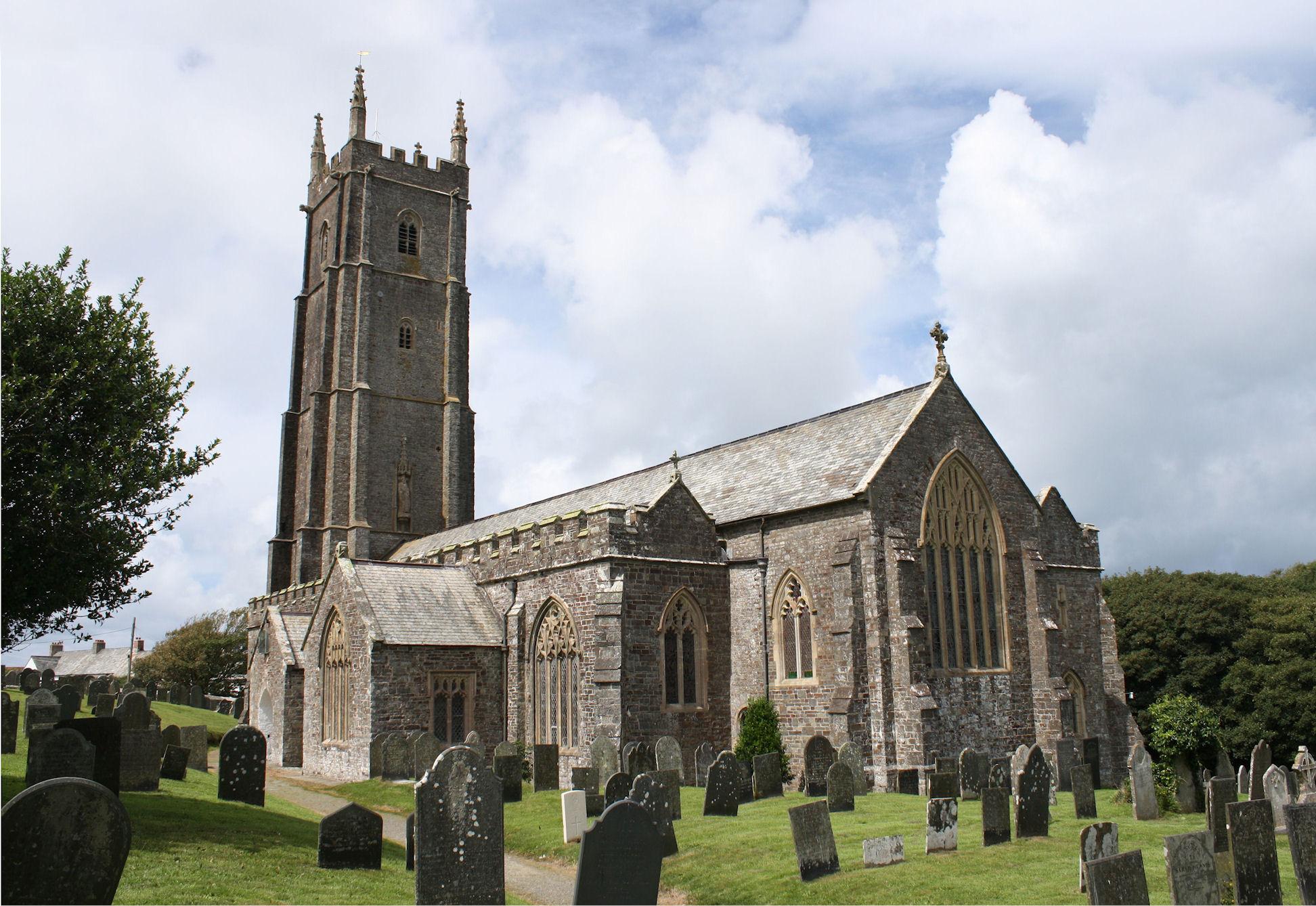All Hallows
Woolfardisworthy, Devon
The church was formerly a chapelry of the parish of Hartland and was one of the properties given to support Hartland Abbey at the time of Richard I.

St Nectan's church is an exceptional, delightful medieval country church in a wonderfully scenic location.
Hartland, Devon
The present church was started in 1170 and completely rebuilt in 1360. Its most obvious feature is the eye catching tower, erected around 1420 and standing 128 feet high. It was used as an aid to navigation by sailors along the treacherous North Devon coast.
Externally the church is striking and the inside is really worth a visit. There is a beautifully carved chancel screen, perfectly preserved with painted panels. It is one of the oldest screens in Devon, dating from around 1450.
There is a 14th century piscina and a late Norman font which has carved faces representing baptised parishioners. The pulpit is late medieval, as are the wagon roofs in the chancel and nave. One of the beams comes from HMS Revenge.
The church is packed with memorials, including a brass to Anne Abbot dated 1610 and two plaques commemorating publisher John Lane and his adopted son, Sir Allen Lane, who founded Penguin Books. In the chancel is a fascinating altar tomb brought from Hartland Abbey, where it was used as a flower trough. It was thought to have held the relics of St Nectan.
Also in the chancel is a chair used by the Ethiopian Emperor Haile Selassie when he officially opened the church fete!
The stained glass windows are stunning. The east and west windows are by Christopher Webb and there are some by glass painters Caroline Townshend and Joan Howson depicting the history of the parish and featuring King Arthur with Arthurian symbols; a depiction of King Alfred, who held Hartland in the 9th century; and William the Conqueror, lord of the manor in Norman times. There are also at least two windows by Alfred Beer.
St Nectan
Nectan was a 5th century holy man who settled here with his followers. One day in 510 AD, a swineherd named Huddon gave him two cows. Two robbers stole the cattle. Nectan tracked them, hoping to point out the error of their ways, and they responded by cutting off his head. Nectan picked up his head and carried it home. He laid it on a rock by the well and collapsed. Legend has it that a foxglove sprang up wherever a drop of blood had fallen.
The well is 300 yards from the lychgate. A short path leads to a small wooded dell, where a stone wellhead protects the spring.
Woolfardisworthy, Devon
The church was formerly a chapelry of the parish of Hartland and was one of the properties given to support Hartland Abbey at the time of Richard I.
Poughill, Cornwall
The churchwarden’s records for this church are particularly detailed and enable precise dates to be given to many features in the church.
Alwington, Devon